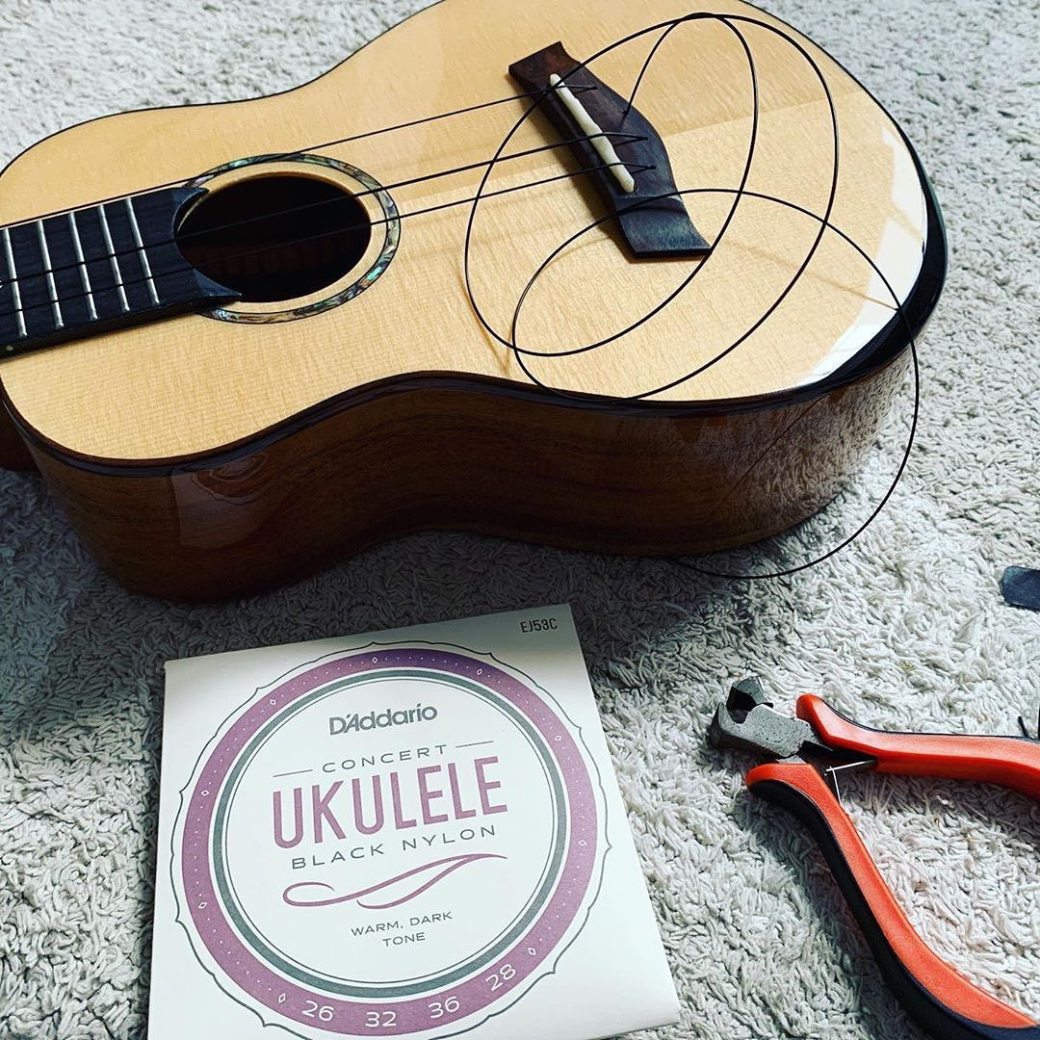Italian-born, Brighton-based singer-songwriter Julia Traser contemplates this notion on her debut album Perfect Timing, a…

Changing Strings
We are starting a new series of posts – #FlightUkeTips! This one is by ukestuff.info
If you are a ukulele player, you should learn how to change your own ukulele strings. String maintenance is a basic part of ukulele care, and strings are one of the few things you can change or replace on your ukulele. In addition, music stores charge a surprising amount to change strings so you will save money by learning how to change your own strings.
The more you play your ukulele, the more frequently you will need to change your strings. It is common to change strings at least twice a year. A string change is needed if a ukulele starts to sound less lively or if new intonation issues develop with an instrument. If your strings have been on your ukulele for a while, check the underside of your strings. Frets will dent or eat away at the underside of a string—something that you cannot tell simply by looking at or playing a ukulele— and those dents impact the vibration of the string.
When you change strings, have a string winder (with a string clipper) on hand, as well as a tool to tighten screws and nuts on the tuning heads (see the Music Nomad Octopus), some fretboard oil (for wooden fretboards and bridges), and a tuner. You should also have a soft towel or an instrument mat on which you can lay your ukulele while you work on it.
There are four different types of ukulele bridges: slotted bridges (see the Flight TUS 35), tie bar bridges (see the Flight DUC380), pin bridges (see the Flight DUS445) and pull through bridges (see the Flight Voyager). There are two different types of headstocks: solid headstocks and slotted headstocks. Most Flight ukuleles have geared tuners, but there are ukuleles like the Flight MUS-2 that have friction tuners, and there are still other ukuleles that have planetary tuners. Regardless of the combination of bridge and headstock of your ukulele, there is a YouTube video that will show you how to restring your ukulele—just search for it!
When you change your strings, they will keep going out of tune until they have stretched and settled. You can physically stretch the strings after they are attached, or you can tune (and keep tuning) the strings a little sharp until they begin to settle, and then play (and keep tuning) that ukulele until it starts holding its tuning—generally about 30 minutes of playing.
Your new ukulele strings will continue to stretch over time, so be ready to tune them whenever necessary. Then, at some point, those strings will reach the end of their lifespan. Your ukulele may sound “less lively,” there may be new intonation issues, or you may feel some bumps under the strings. When that happens, it will be time to change your strings again.



